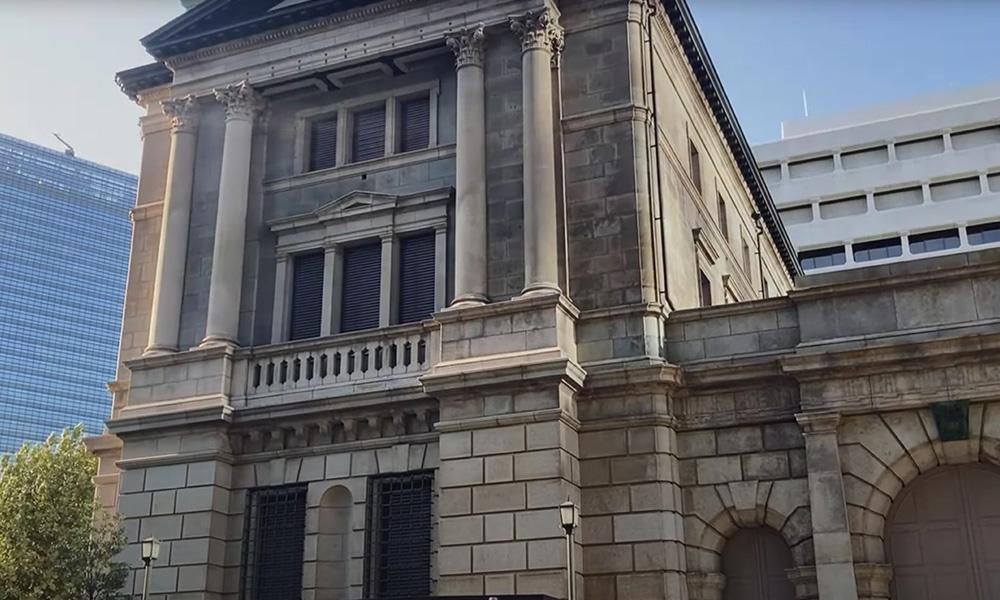The Bank of Japan has restarted its interest rate hike signal! Is the "real dawn" of the economy coming soon?
2025-07-03 14:13:27

Takata's optimistic outlook: Japan's economy is close to inflation target
Inflation target within reach
In his speech, Takata Hajime pointed out that the Japanese economy is gradually approaching the 2% inflation target set by the central bank, which is an important milestone. He said that strong corporate profits and continued shortages in the labor market are driving up wages, which in turn puts upward pressure on prices. This sign of endogenous inflation is what the Bank of Japan has dreamed of for many years. Unlike the situation of low inflation expectations in the past few decades, current medium- and long-term inflation expectations are steadily rising, which is not only due to the increase in raw material costs, but also due to the continued growth of wages.
Getting rid of the "stagnation of inflation" curse
Takada further stressed that the long-standing pessimistic expectations of Japanese society about inflation and stagnant wage growth are undergoing a fundamental change. Companies are now more willing to raise prices and employee wages, which is a sign that the Japanese economy is breaking free from the shackles of "deflationary thinking." He vividly stated that the Japanese economy has experienced many "false dawns" in the past - short-lived recoveries interrupted by global demand shocks, but this time, he firmly believes that Japan will usher in the "real dawn." This optimistic attitude has undoubtedly injected confidence into the market and provided a solid basis for the Bank of Japan's policy adjustments.
Background on the pause in rate hikes: Potential impact of US tariffs
Why pause on rate hikes?
At the beginning of 2025, the Bank of Japan raised its short-term interest rate to 0.5%, ending years of ultra-loose monetary policy. However, the comprehensive reciprocal tariff policy announced by US President Trump on April 2 has brought new uncertainties to the global economy. Affected by this, the Bank of Japan lowered its economic growth forecast in May and chose to "stand still" for the time being to observe the specific impact of US tariffs on the Japanese economy.
Flexibility in responding to external challenges
Takata admitted that the Bank of Japan needs more time to assess the impact of US tariffs on exports, capital expenditures and companies' willingness to raise wages. He specifically mentioned that if the US Federal Reserve (Fed) cuts interest rates to support the economy, the divergence between the Bank of Japan's interest rate hikes and the Fed's loose policy may lead to an appreciation of the yen, which will put pressure on Japanese corporate profits. However, he believes that compared with the US-Japan bilateral trade friction in the 1990s, the impact of current US tariffs may be more limited. This is because Trump's tariff policy targets multiple countries, not just Japan. In addition, Japanese companies now have stronger profits and financial buffers, making them more resilient to external shocks.
Determination to restart rate hikes: flexibility and caution
"Suspension" instead of "termination"
Takada made it clear that the Bank of Japan's interest rate hike cycle was only "paused" rather than ended. He suggested that the central bank should flexibly adjust monetary policy and restart the interest rate hike process at an appropriate time after carefully studying the impact of US tariffs. In his speech, he said: "My view is that the Bank of Japan has only paused the interest rate hike cycle for now, and after a period of 'wait and see', it should continue to promote the transition from ultra-loose monetary policy." This statement reflects the Bank of Japan's confidence in economic fundamentals, and also shows its cautious attitude in a complex international environment.
Hawkish signal
The market generally believes that Takata holds a neutral or slightly hawkish stance on monetary policy. His speech further reinforced the Bank of Japan's determination: once the impact of US tariffs on the economy becomes clear, the central bank will not hesitate to resume the pace of interest rate hikes. This policy signal is crucial for investors because it means that the Bank of Japan is making more adequate preparations to exit its unconventional easing policy.
The “real dawn” of the Japanese economy: opportunities and challenges coexist
The hope for endogenous inflation
Takata's optimistic outlook for the Japanese economy is not groundless. He pointed out that strong growth in corporate profits, labor shortages and rising wage trends are injecting new vitality into the Japanese economy. These factors have jointly promoted the emergence of endogenous inflation, laying the foundation for achieving the 2% inflation target. He expects that this positive trend will remain largely unchanged even in the face of challenges from US tariffs.
A cautiously adjusted future
Despite the optimistic outlook, Takada stressed that the Bank of Japan needs to adjust monetary policy in a "gradual and cautious" manner. He said the central bank must be flexible in responding to external uncertainties while ensuring that the economy can smoothly transition to a higher interest rate environment. This balance is both a test of Japan's economic resilience and a challenge to the central bank's policy wisdom.
summary
Takata's speech painted a hopeful picture for the future of the Japanese economy. Against the backdrop of growing uncertainty in the global economy, the Bank of Japan has demonstrated a flexible yet firm policy stance. By temporarily pausing rate hikes to observe the impact of US tariffs, the central bank has bought time for future policy adjustments; and Takata's prediction of a "real dawn" has instilled confidence in the market. It can be expected that as the Japanese economy gradually escapes the shadow of deflation, the central bank will push for monetary policy normalization at a more steady pace.
In the short term, as the rate hike cycle is only a "pause" rather than an end, the market's expectations for the Bank of Japan's hawkish policies may increase, and the yen may be supported and appreciate slightly, especially before the impact of US tariffs becomes clear. However, if the Fed's rate cut leads to a narrowing of the US-Japan interest rate gap, the pressure on the yen to appreciate may increase, especially in the scenario mentioned by Takata that the Fed's loose policy may push up the yen. This may put pressure on the profits of Japanese export companies and indirectly limit the room for yen appreciation. In the long run, if the Japanese economy continues to approach the 2% inflation target and shows "real light", the increase in expectations for rate hikes may drive the yen to gradually strengthen, but we need to be wary of the potential negative impact of US tariffs on exports and corporate confidence, which may weaken the momentum of yen appreciation.
- Risk Warning and Disclaimer
- The market involves risk, and trading may not be suitable for all investors. This article is for reference only and does not constitute personal investment advice, nor does it take into account certain users’ specific investment objectives, financial situation, or other needs. Any investment decisions made based on this information are at your own risk.










